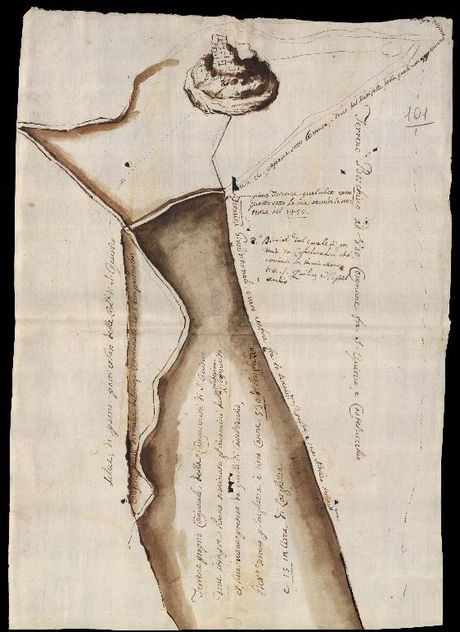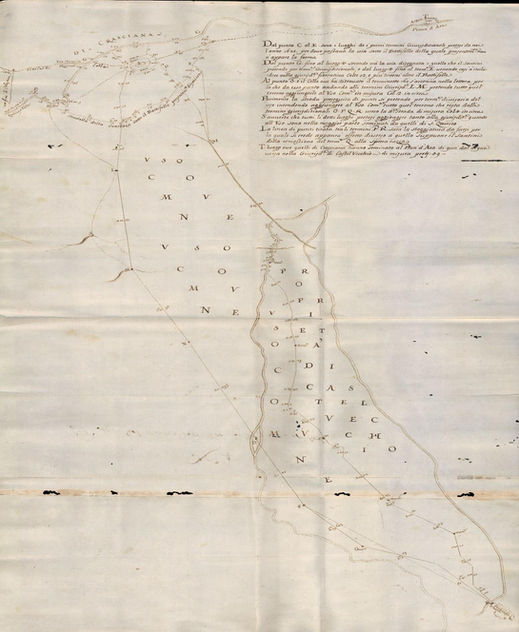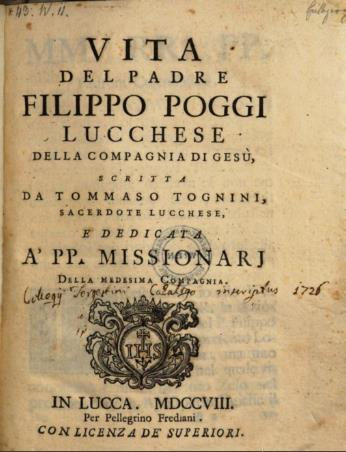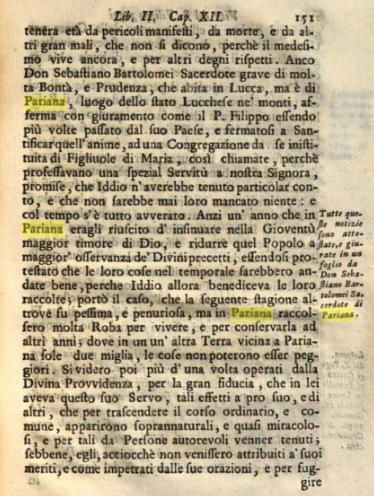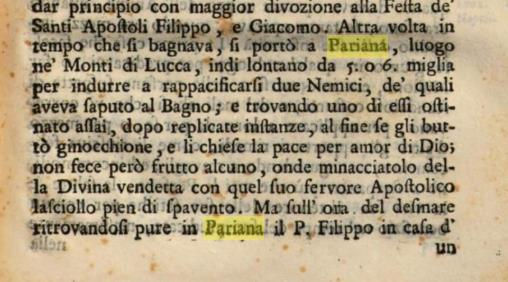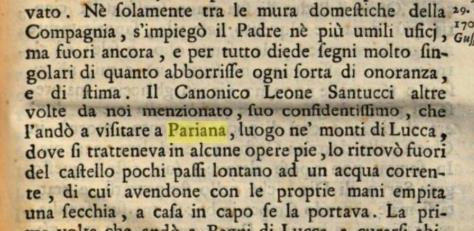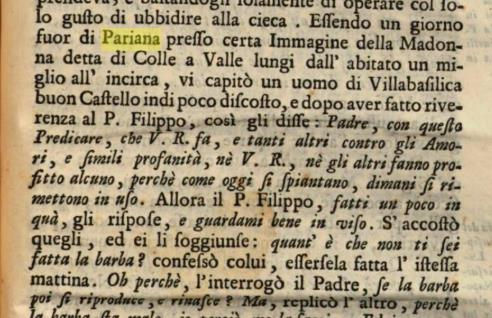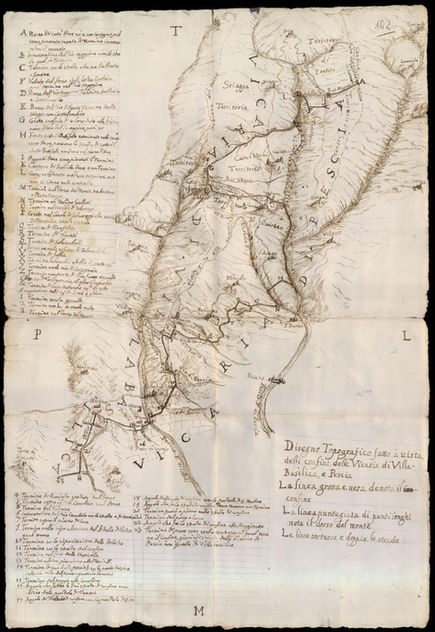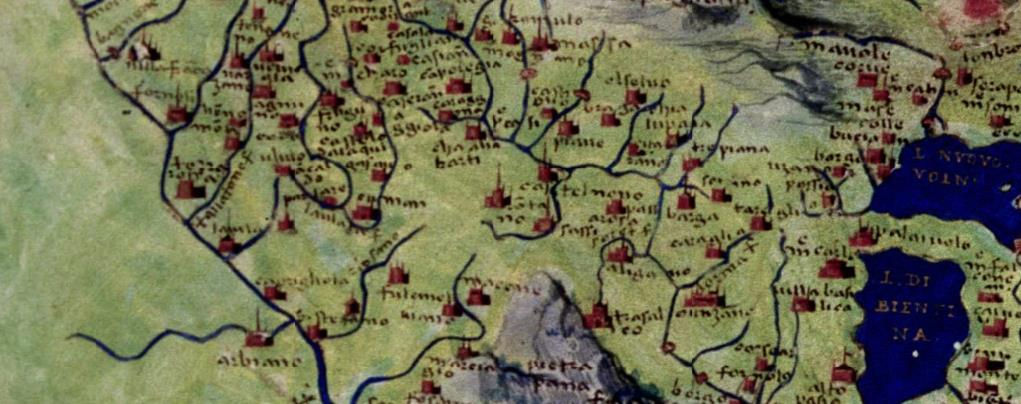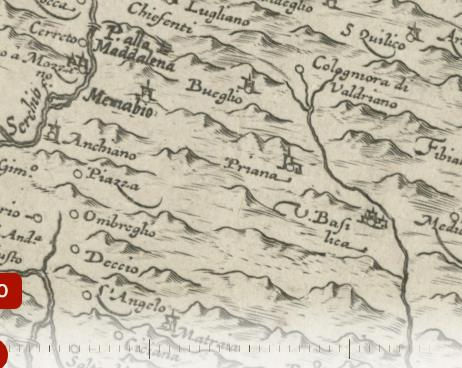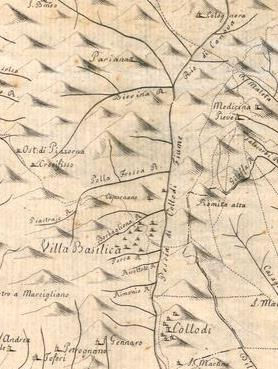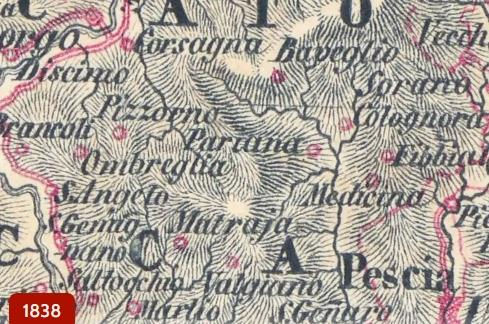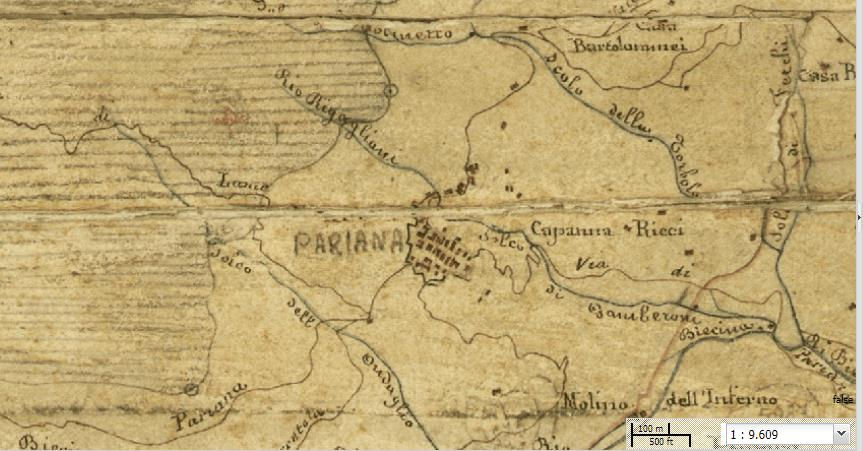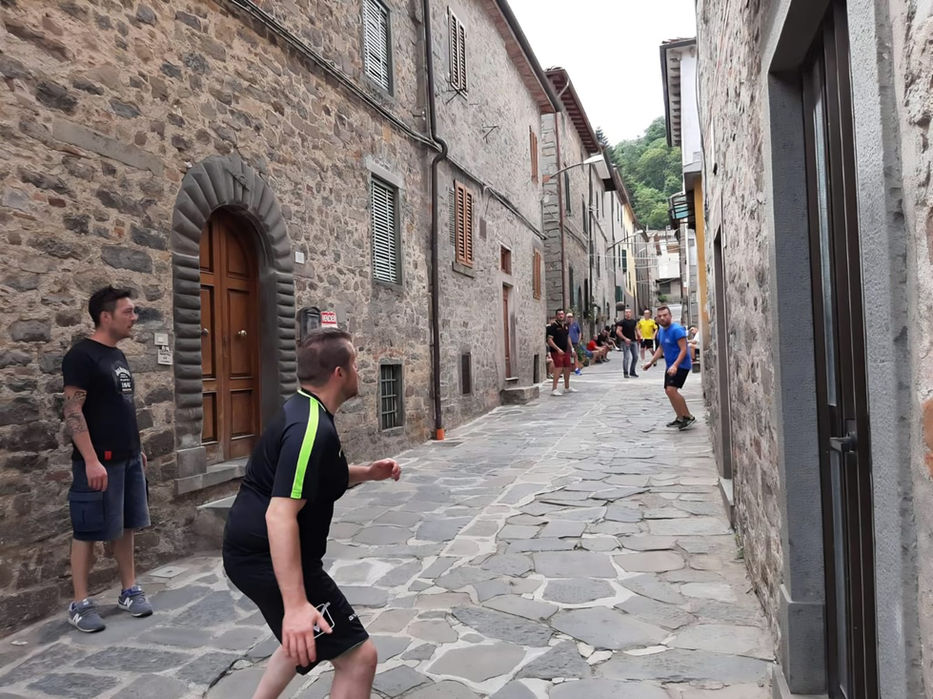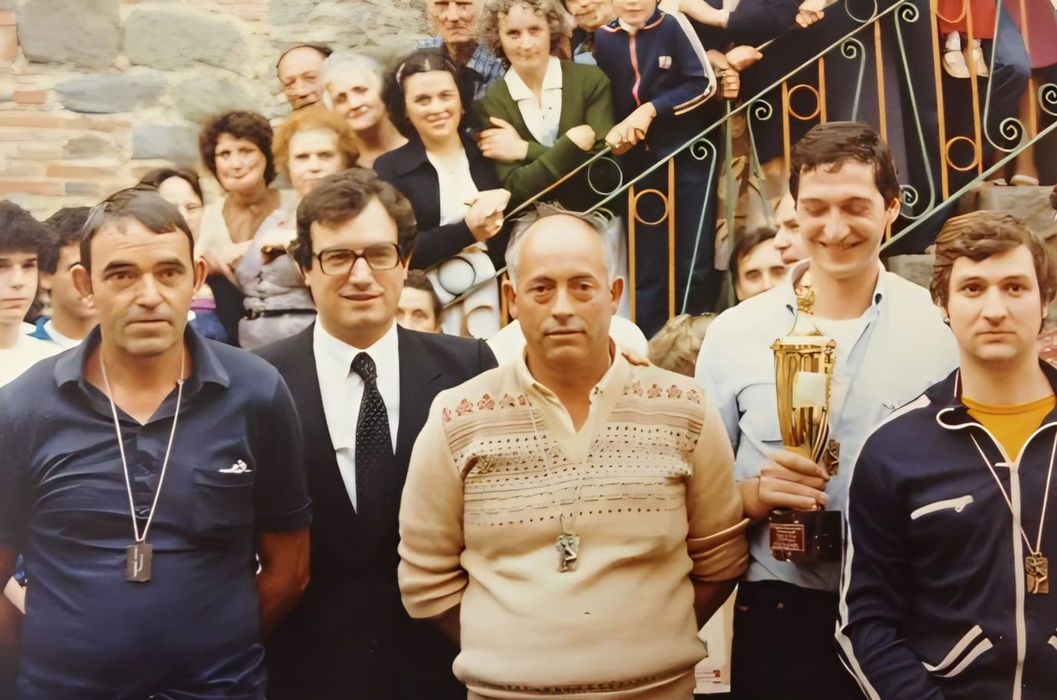THEMATIC SHEETS
In this section of the Pariana Guide, sheets on individual topics are included.
A curious detail – which reveals the very nature of historical research – comes from the comparison between these two documents: the first is a deed signed with her monogram – highlighted alongside – by Matilda of Canossa, in 1077, in which it is stated that it was drawn up in Pappiana, written exactly as it appears. However, the second document, more than a hundred years later, from 1196, contains the word Pariana, which is very similar. The uncertainty lies in the letter “p” or “r”. In the Matildan document, at first glance, it appears to be a “p”, thus Papiana, but the pen stroke of the notary who drew up the deed – which would turn the “r” into a “p” – may in fact be the continuation of the tail of the “i” that follows that letter.
It cannot be ruled out, but should be considered a clue, pending possible confirmation or refutation.
It is interesting to note, in historical maps, the recurring image of a fortification – which later became a toponym – called Battifolle, located on the ridge toward the Val di Lima and the Pistoian Apennines, and which appears as destroyed on the maps.
Another very significant element of the relationship between communities and villages is found in the toponym Monte dell’Uso. It appears to be a territory – located right on the border between two states, Lucca and Florence – that is common, meaning it could be used by the communities situated on the slopes of that mountain. This is a continuation of the compasqua, shared pastures: lands on the ridges left for common use by populations living on different sides of the mountain.
Today, these are the foundation of Usi Civici (Civic Uses), in which the word uso refers precisely to the regulated possibility of collectively using lands that, for this reason, were “non-property” and inalienable, but belonged in perpetuity to the populations in a collective form. From this came the rights of gathering wood (legnatico), grazing (pascatico), haymaking (erbatico), and so on: common, civic uses.
It is recalled that in 1544, Pariana possessed no less than 1,600 hectares of communal land. A fine reminder of the ancient way of life in the mountains.
Pariana has given birth to or hosted several individuals who played a role in the religious life of the territory and the City of Lucca.
We recall Don Sebastiano Bartolomei of Pariana, who introduces us to Father Filippo Poggi of the Society of Jesus who, in the climate of the Counter-Reformation, was often in Pariana, where he preached several times—especially to the girls—and where he experienced various events described here.
Closer to us in time, we remember Blessed Maria Domenica Brun Barbantini, born in Pariana in 1789. She dedicated her life to charitable works, especially in the field of youth education. In this area, she founded the Monastery of the Visitation in Lucca, with a school that still exists today and is commonly known as “Le Barbantini.”
Since the 16th century, there have been maps depicting the territory. In some, Pariana is indicated; in others – the more general and broader ones – only Villa Basilica is mentioned, to indicate the Plebanato and the Vicariate.
A chi arriva a Pariana si para davanti, all’ingresso del paese, un cartello con su scritto: Pariana il paese della Palla elastica. È un gioco antichissimo, praticato come Palla al tetto fin dai Romani e di cui si hanno notizie come Gioco del Pallone, nel XVIII secolo. I Pariani vanno infatti ben fieri di questo gioco che è un loro segno identitario.




